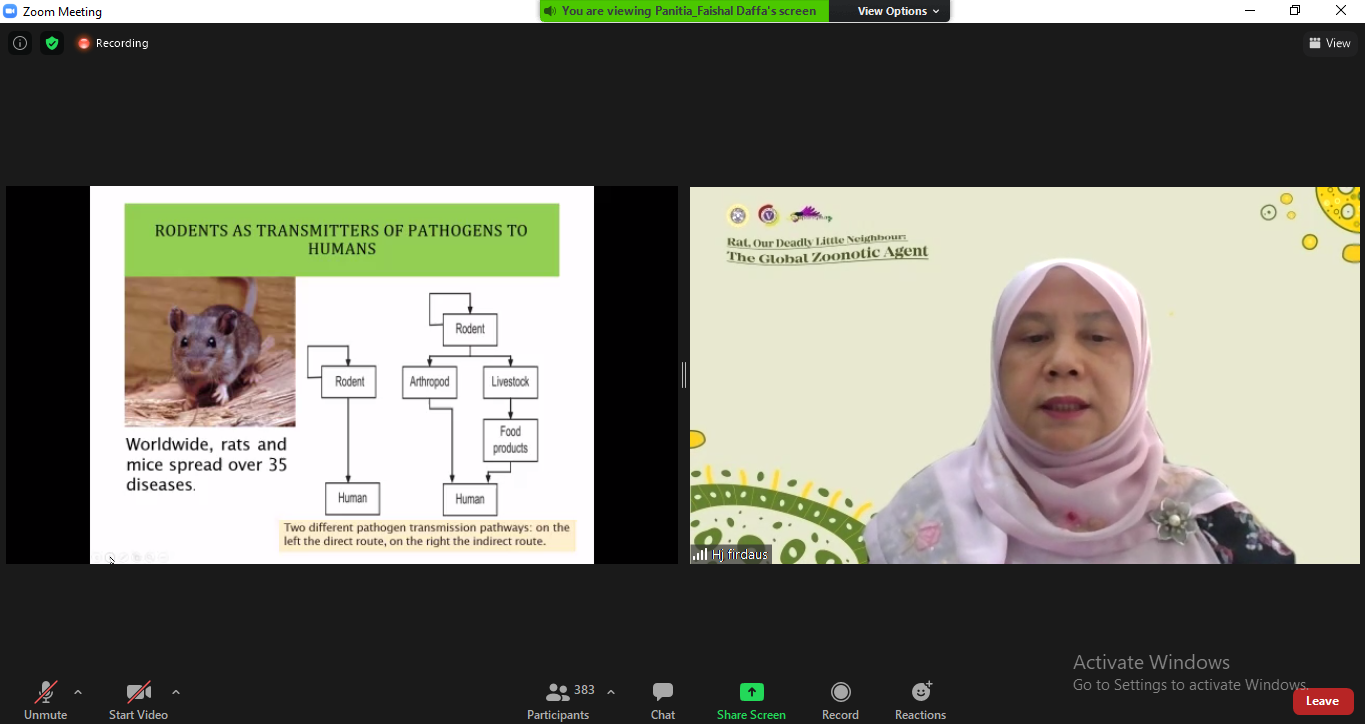UNAIR NEWS- Faculty of Veterinary Medicine (FKH) Universitas Airlangga (UNAIR) has held another international community service. It was held online as webinars on Saturday and Sunday, June 24-25, 2021. The annual event was initiated by the Student Executive Board (BEM KM) FKH UNAIR.
This year’s topic was “Rat, Our Deadly Little Neighbour: The Global Zoonotic Agent”. This topic has attracted attention from many because rodents such as rats are among the most popular animals to be the reservoir of various diseases.
On the first day of the event, Assoc. Prof. Dr. Siti Khairani Bejo from Universitas Putra Malaysia (UPM) said that rodentia is one of the most abundant and diverse living mammal orders, representing 43% of the total number of mammal species. In many places, rodents live and are in close contact with human populations, livestock, or pets.
“Rodents in the suburbs provide a link between wildlife community and humans, the source of several diseases in these natural ecosystems. The presence of rodents can also have serious implications for public health and the veterinary world,” said the Head of Pathology and Veterinary Microbiology Department at UPM.
Rodents are very dangerous, she continued, because they can multiply pathogens from the environment and form a reservoir of zoonotic diseases. Pathogens transmitted by rodents can also spread indirectly to humans. Also, she said that mice could serve as hosts strengthening pathogens and contact humans through ectoparasite arthropod vectors.
“Rodents that are accidentally or intentionally ingested by livestock can transmit pathogens that cause morbidity in humans if these food products are not cooked properly,” said Assoc. Prof. Siti.
Furthermore, Assoc. Prof. Siti emphasized that rodents can maintain the cycle of pathogen transmission in some different environments, from densely populated urban areas to rural areas and in deserts.
In general, there are two routes of disease transmission from rats, direct and indirect. The direct transmission route is from food bit by rats, and humans consume the food or from water contaminated with rat faeces. Humans can come into contact with their urine, causing leptospirosis. Humans may also inhale the germs from the rats’ faeces, such as hantavirus. On the other hand, the indirect transmission route, she said, could be through ectoparasite arthropod vectors such as fleas and mites.
“I advise all of us to always keep the environment clean. Don’t ever give rats a chance to infest because these small animals are very threatening to global health,” concluded Assoc. Prof. Siti. (*).
Author: Muhammad Suryadiningrat
Editor: Nuri Hermawan (AC/AP)





